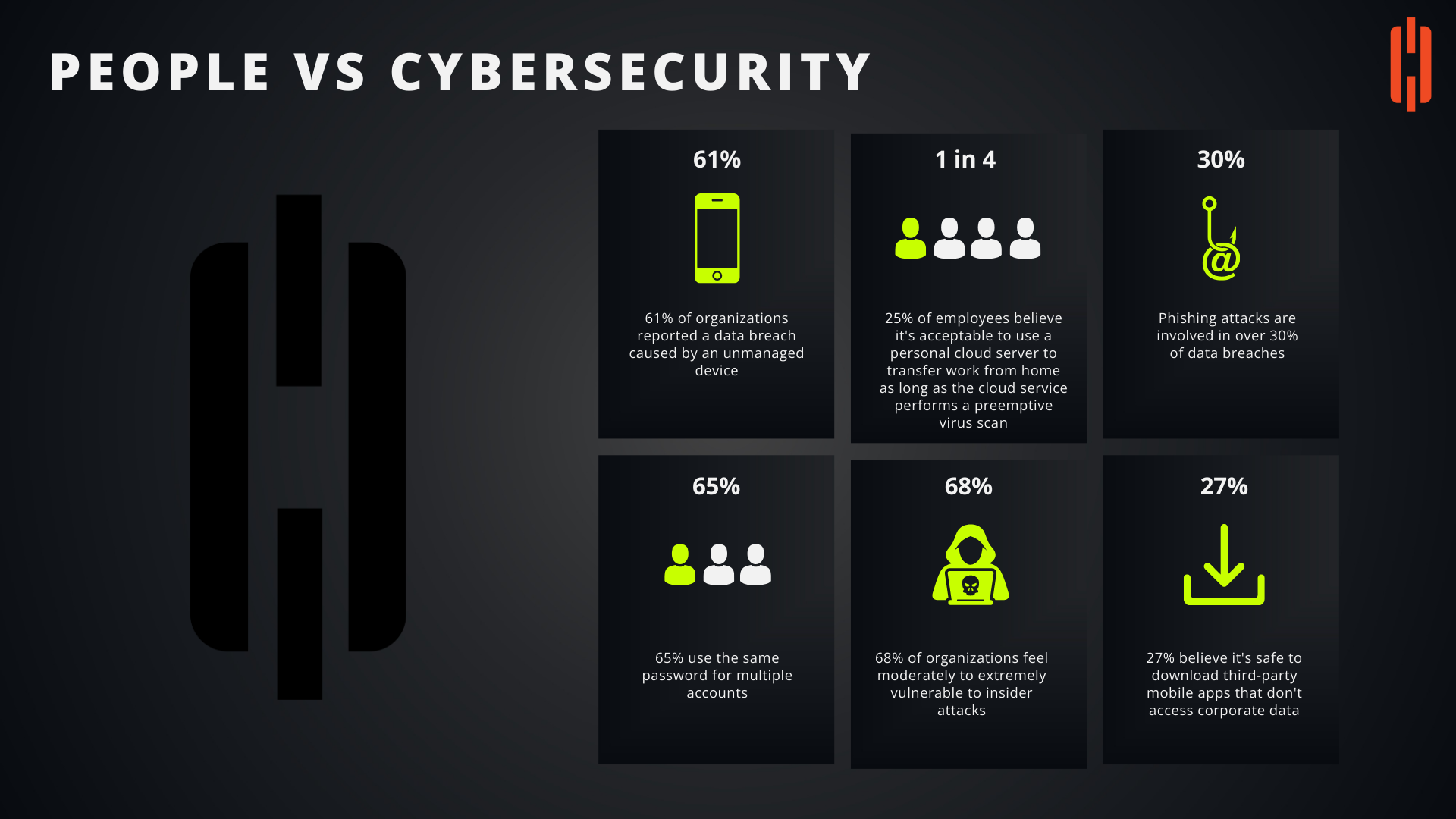People vs. Cybersecurity: The Human Element in Cyber Risk
The statistics in the image underscore the significant role human behavior plays in cybersecurity. Despite advanced security technologies, human error and risky behaviors continue to contribute to data breaches and cyber incidents. Let’s explore each statistic and its implications for organizations.
1. 61% of Organizations Reported a Data Breach Caused by an Unmanaged Device
- Implication: The widespread use of unmanaged devices, such as personal smartphones, tablets, and laptops, presents a significant security risk. When these devices connect to corporate networks without proper security controls, they can become entry points for cyber threats.
- Action: Organizations need to implement strict Bring Your Own Device (BYOD) policies, enforce device management solutions, and educate employees on the risks associated with using unmanaged devices.
2. 1 in 4 Employees Believe It’s Acceptable to Use a Personal Cloud Server for Work Transfers
- Implication: The fact that 25% of employees think it’s acceptable to use personal cloud servers for work highlights a dangerous gap in understanding data security. Personal cloud services may not offer the same level of security and compliance as corporate-approved solutions.
- Action: Companies should provide clear guidelines on acceptable cloud services and educate employees on the risks of using unauthorized platforms for work-related tasks. Encouraging the use of company-approved cloud solutions with built-in security features is crucial.
3. Phishing Attacks Are Involved in Over 30% of Data Breaches
- Implication: Phishing remains one of the most prevalent and effective methods used by attackers to compromise systems and steal sensitive information. Despite awareness efforts, phishing continues to be a significant contributor to data breaches.
- Action: Regular phishing simulations and ongoing security awareness training can help employees recognize and avoid phishing attempts. Organizations should also implement advanced email filtering and threat detection tools to mitigate the risk.
4. 65% of Users Reuse Passwords Across Multiple Accounts
- Implication: The reuse of passwords across multiple accounts significantly increases the risk of credential stuffing attacks, where attackers use stolen passwords from one account to gain access to others.
- Action: Enforcing strong password policies, promoting the use of password managers, and implementing multi-factor authentication (MFA) can help reduce the risks associated with password reuse.
5. 68% of Organizations Feel Vulnerable to Insider Attacks
- Implication: Insider threats, whether from malicious insiders or careless employees, are a major concern for the majority of organizations. Insider attacks can be difficult to detect and can cause significant damage before they are identified.
- Action: Organizations should implement robust insider threat detection programs, which include monitoring user behavior, enforcing least privilege access, and conducting regular audits. Building a culture of security awareness can also help mitigate the risks.
6. 27% Believe It’s Safe to Download Third-Party Apps That Don’t Access Corporate Data
- Implication: The misconception that third-party apps are safe as long as they don’t directly access corporate data overlooks the broader risks these apps can introduce. Malicious apps can still compromise device security and be used as a gateway for broader attacks.
- Action: Organizations need to educate employees about the risks of downloading unapproved third-party apps and enforce strict application controls. Mobile Device Management (MDM) solutions can help monitor and manage the apps installed on corporate devices.
These statistics highlight the critical need for organizations to address the human element in cybersecurity. While technology plays a vital role in defending against threats, employee behavior and awareness are equally important. By implementing comprehensive security policies, providing regular training, and fostering a culture of security, organizations can reduce the risks associated with human error and strengthen their overall security posture.
